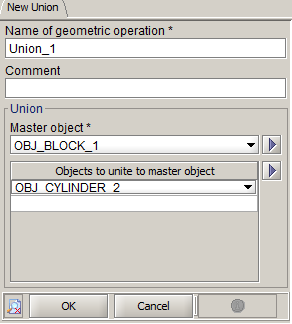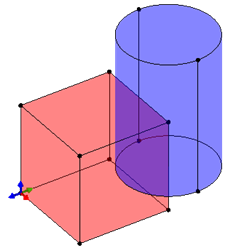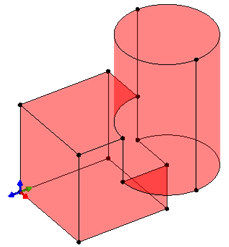Boolean operation Union
Introduction
The Boolean operation Union executes the union between several objects.
The origin objects are merged into one single object and the common part of the original objects disappears.
Structure of the Boolean operation
The Boolean operation Union is described by:
- A coordinate system for the creation of points (active coordinate system in the list available on the graphic View)
- A master object
- One or more objects to join with the master object
| Dialog box | Illustration |
|---|---|

|
Before union |
|
After union |
Result
The creation of a Boolean operation Union of objects results in:
- The modification of the master object.
- The removal of the objects joined to the master object (these objects are preserved in the data base in order to ensure the reevaluation of the building tree in case of possible modifications).
- A geometric operation UNION_1.
- The appearance of the object resulting from the union corresponds to the appearance of the master object.
- An object consists of one volume only if it has intersecting parts, if not, then an object consists of several volumes (example of the union of two objects that are not intersected).
Access
The different ways to access the boolean operation Union are:
- By menu:
- By icon:

Creation of an union of objects
The creation process of an union of objects is presented in the table below.
| Stage | Description |
|---|---|
| 1 | Choice of the coordinate system of creation |
| 2 | Opening the dialog box Union |
| 3 |
Choice of the name of the generated Geometric operation (by default: UNION_1) |
| 4 | Choice of the master object |
| 5 | Choice of objects to join to the master object |
| 6 | Validation by clicking on OK |
| → | A geometric object UNION_1 is created |

